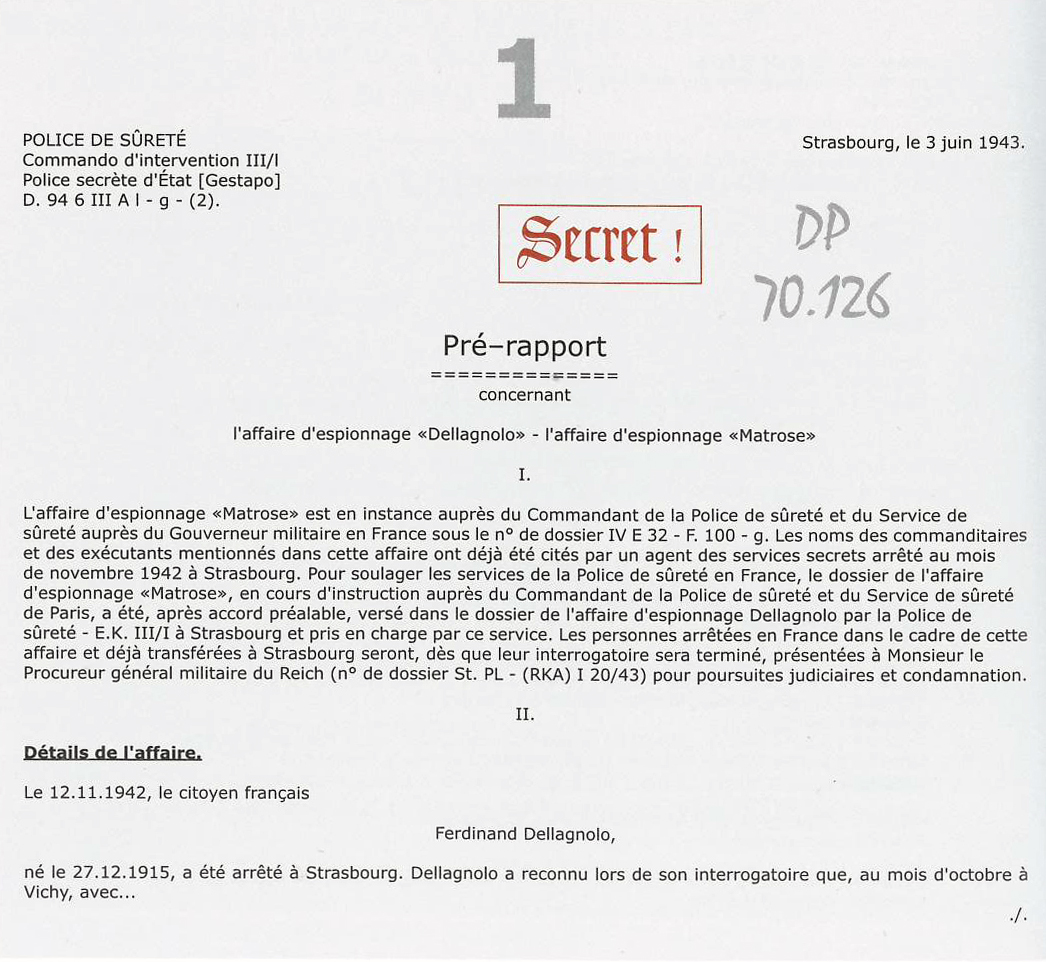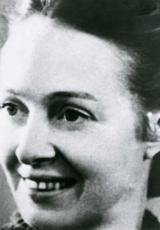The fall of the Alliance network

Spi-Fall Dellagnolo-Matrose (sailor) and Spionage Organisation Alliance: these code names reveal the stages in a joint investigation conducted by the Strasbourg Gestapo and the Paris SIPO-SD to bring down, twice, the members of the Alliance network, founded by Georges Loustaunau-Lacau in spring 1941.
One of the first networks dismantled
The affair began on 12 November 1942, when a certain Ferdinand Dellagnolo was arrested in Strasbourg. His interrogation revealed that he had met two agents from an ”important” network in Vichy in October, and that he had offered to collect information in the annexed Alsace. Trained in Marseille, he had met the ”so-called head of the organisation […] who bore the pseudonym of 'Lion'” and another officer ”with the pseudonym 'Hérisson'” (hedgehog). The Strasbourg Gestapo quickly realised that this meant Léon Faye and Marie-Madeleine Bridou-Méric (also known by the name of Fourcade-Méric) respectively, two figures close to Georges Loustaunau-Lacau, who had himself been arrested on 18 July 1941.
Immediately, the BdS in Paris was informed that an investigation had been opened, because the ramifications of the case extended into his zone. And he responded: working with the Abwehr, investigations were entrusted to his staff in Vichy, Marseille, Nancy and Paris. A German sailor, Willy Müller, acted as an agent to infiltrate the network. In January 1943, the Germans realised they were dealing with an intelligence organisation working exclusively for England, planning sabotage operations and above all acting in the former ”free” zone while liaising with North Africa. It was Alliance that had organised the departure of General Giraud. The German police quickly identified Maurice Grapin (”Panda”) as the regional head in Marseille and arrested him in late January. Grapin talked, and the Germans discovered several unencrypted reports. The first ”Alliance” network was almost entirely dismantled between January and April 1943.
While BdS Paris police officers carried out most of the arrests, BdS Strasbourg was responsible for examining the files of the primary culprits in the so-called ”Dellagnolo” affair (see slideshow), doubtless due to its starting point and its scale. This explains the often unusual treatment of the victims. Most of the network members, gathered at the prison in Fresnes, were deported on 27 May and 29 June 1943 to the prisons in Buhl, Offenburg or Wolfach in the Gau Oberrhein district to which the annexed Alsace belonged. This gave the BdS Strasbourg staff time to prepare police files for a judgement. The military nature of the information sent to England by the Alliance doubtless explains why its members were judged by the Reichskriegsgericht (Rkg), the Reich's supreme military court. The first trial took place on 14 December in Freiburg im Bresigau. It concerned the members of the Bouches-du-Rhône, Hérault and south-western sectors: all were condemned to death and executed on 1 April 1944 in Karlsruhe. A second trial was held in February 1944, leading to executions near Ludwigsburg on 23 May.
A second wave of repression
However, not all the heads of the network were caught in this first wave. Marie-Madeleine Bridou-Méric reached London, and Faye took on the leadership of a new organisation alone. But the German services were alert to what became, for them, the ”Alliance II” case. On 11 June 1943, Ernest Siegrist, the head of security, and his deputy Louis Payen were arrested in Lyon. During the searches that followed, a large number of documents were seized. The consequences were serious: as a SIPO-SD report stated, this gave the German services ”a more complete overview of the organisation”, including names and addresses. A number of liaison agents fell in August, including Faye's, Pierre Dayné. Combined with betrayals by group members - including Jean-Paul Lien, whose actions were revealed after the war - the information collected quickly extended up to the head of the network. The message announcing Faye's return from London - ”Whale-hunting is a profession of the devil” - was picked up by the Germans. The Alliance chief was arrested shortly after his arrival by air on 16 September 1943. In the weeks that followed, at least 220 agents fell.
Once again, it was the Strasbourg Gestapo (see slideshow) that took charge of examining the files to present them to the Rkg. An initial transport of at least 35 detainees left Paris for Alsace on the evening of 16 December 1943. Faye was not among them: he had already been deported on 27 November, in haste and secrecy, following an escape attempt. Most of the staff of the network, which had mostly been dismantled, and the resistance members in the western Alliance sectors, left a month later at the end of January 1944 for the prisons in Kehl or Pforzheim. Between March and June, dozens of detainees from other Alliance regions were taken to the Schirmeck camp in Alsace, where their files were examined. The legal process took time, and a single large-scale trial was held to condemn the ”Alliance II” resistance members in Freiburg on 28 June 1944. Léon Faye was the first to be condemned to death. He was executed on 30 January 1945 at Sonnenburg prison, while his colleagues condemned before him, including Ferdinand Dellagnolo, were executed on 21 August 1944 in Heilbronn. The other members of the group were deported and executed as the Allied armies advanced: 107 on the night of 1 to 2 September 1944 at the Natzweiler-Struthof concentration camp, and dozens more during the subsequent weeks at prisons in Germany.
In all, over 400 members of the network were executed. This reveals the importance the Germans placed on the resistance organisations, which they associated with the Giraudist services and which provided military intelligence to the English.
Thomas Fontaine
Historian, research associate at the Twentieth-Century History Centre, Paris 1
& Cédric Neveu
Historian, specialist in Nazi repression and policing
FOR MORE INFORMATION
The complete German file on the Alliance organisation will be classified under sub-series GR 28P 3.
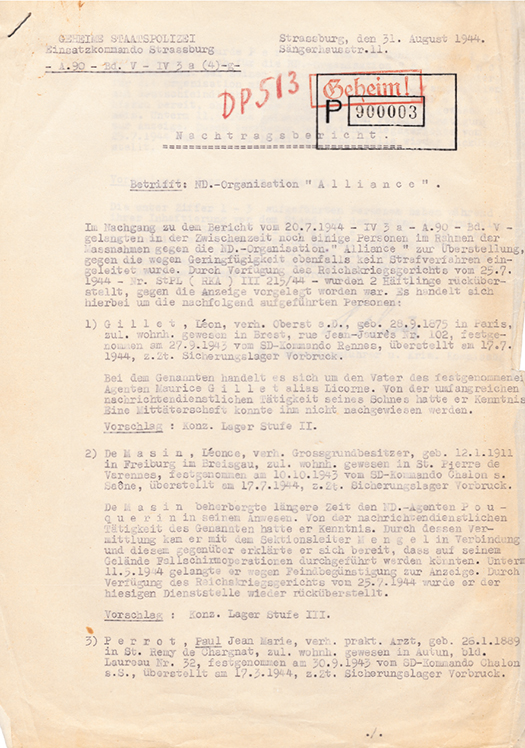
Rapport de la Gestapo de Strasbourg sur l'organisation Alliance, 31 août 1944 (extrait)
© SHD
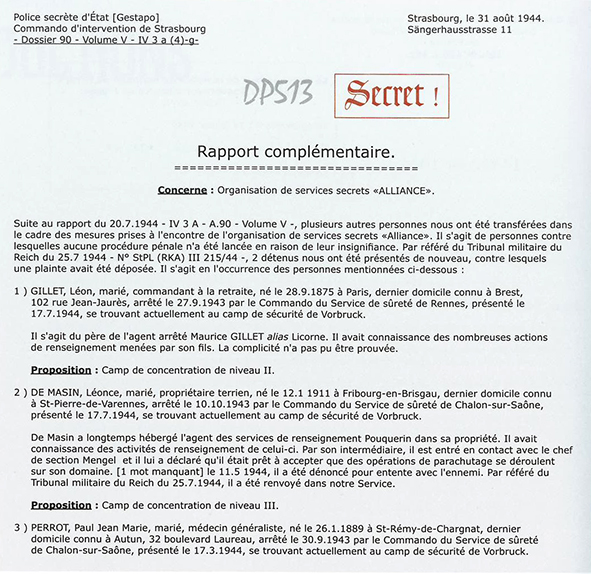
Rapport de la Gestapo de Strasbourg sur l'organisation Alliance, 31 août 1944 (extrait-traduction)
© SHD
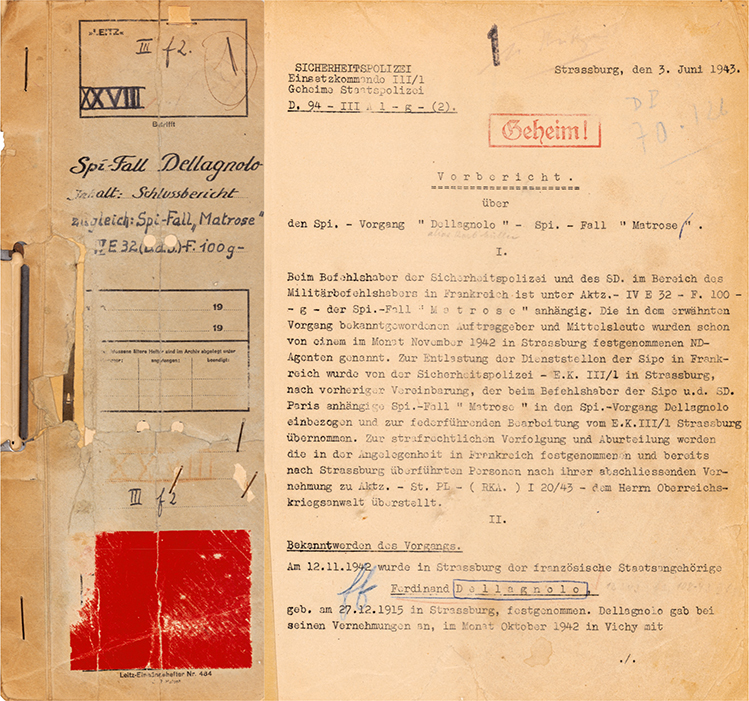
Rapport de la Gestapo de Strasbourg sur l'affaire Ferdinand Dellagnolo, 3 juin 1943 (extrait).
© SHD
